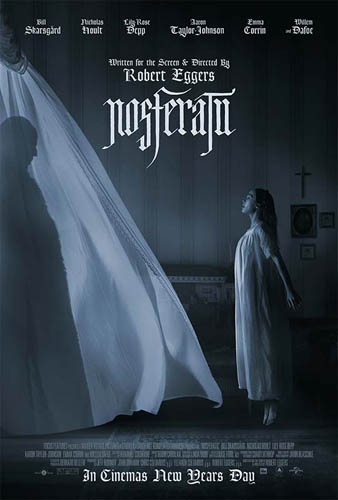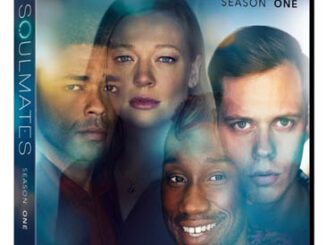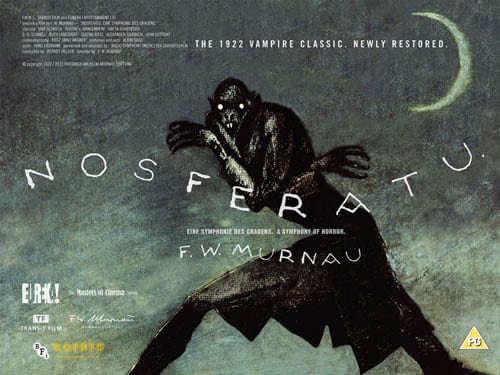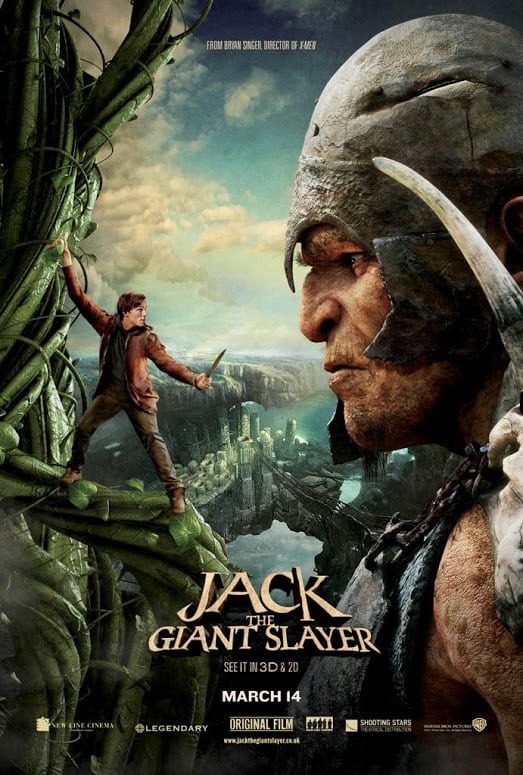Nosferatu (2024)
Directed by: Robert Eggers
Written by: Bram Stoker, Henrik Galeen, Robert Eggers
Starring: Aaron Taylor-Johnson, Bill Skarsgård, Emma Corrin, Lily-Rose Depp, Nicholas Hoult, Ralph Ineson, Simon McBurney, Willem Dafoe

NOSFERATU (2024)
Directed by Robert Eggers
I left the cinema with a certain excitement. I’d felt it before after seeing Denis Villeneuve’s Dune. It was a feeling of satisfaction that comes after watching, what I firmly believe will transpire to be, the definitive version of an oft’ told story. Because, like Dune, Nosferatu has been told before. But never this well.
I can now say I have seen all iterations of Nosferatu, including 1922’s and 1979’s.
Birthed as an unauthorised cinematic version of Bram Stoker’s Dracula, Nosferatu tells Stoker’s tale with a few alterations, and the names have been changed to protect the horrific.
1922’s Nosferatu is not a scary film by modern standards. Who would expect it to be? But it was a pioneering work in the horror genre; unbound by the modern trappings of the horror genre, it succeeded in brewing a sense of unease and foreboding. And it would be remiss of me on to mention 1922s iconic use of shadow.
Roger Eggers brilliantly recreates this atmosphere, this sense of doom, and the way he plays with shadow had me smiling from the first shots of the film. Windows are opened, curtains billow in the wind, there’s a shadow of a man in the curtains yet, as the camera pans round, there’s no-one there.
We’ve seen the trailers, we’ve seen the shadowed hand casting fear and chaos across the town of Wisborg, Germany. Ellen Hutter, played brilliantly by Lily-Rose Depp, suffers visions of a strange man she has never met. Shadowed fingers unlock a window. Something is coming, something evil that wants her.
I can’t deny a certain thrill to hearing “Count Orlok” (both honorific and horrific) spoken aloud for the first time in the theatre. Where 1979’s Nosferatu reverts to Dracula, 2024’s Nosferatu draws inspiration and narrative cues from 1922’s Nosferatu. This means that instead of Dracula, we get Orlok, instead of Jonathan Harker, we get Thomas Hutter, instead of Van Helsing we get Eberhart Von Franz. Iconic names in their own rights thanks to the Nosferatu’s legacy. Creatively, it also means Robert Eggers is not as bound by audience expectation as he would otherwise have been had the Count’s name been Dracula. Functionally the same character, but there’s a different weight between Orlok and Dracula. Perhaps the difference is equal to that that lies between bats and rats.
The one aspect of vampires that has often fascinated me is how they “incorrectly” interact with the world. They do not have reflections, their breath casts no steam in the cold, flowers wither in their presence, gravity doesn’t always take hold, dogs sense their inherent “wrongness”, and their shadows (when they have them) act on their own agency (I’ll never shake the image of Dracula’s shadow trying to strangle Keanu Reeves in Francis Ford Coppola’s 1992 Dracula). As I think on this now, are these “signs and portents” of evil something we would otherwise call “red flags”. If someone has no reflection, yes, I am calling that a red flag.
From Blade to From Dusk Til Dawn, the constant re-explaining of the rules of vampirism can often hold up a vampire film to the point I’d be surprised if a trope had not been named after it – and the rules of vampirism always seem to be far more malleable than those of, say, the werewolf! I expect the rules were explained in Twilight as well, though I have not seen that film, cultural osmosis has made me aware of the sparkles which I refuse to believe went without in-universe elaboration.
Bill Skarsgard’s Count Orlok also has his own rules, most of which are mercifully shown rather than told. He astral-projects, bites peoples chests instead of their necks, speaks Dacian, wears the thickest of thick coats, and does not rejuvenate from blood sucking. That last one was a real creeper. Imagine immortality, but only ever getting older, slower, disintegrating bit by bit as the centuries continue to march on. Yes, the Count is still threatening and imposing, but physically speaking, he’s had better days. His hair is falling off, his skin is atrophying, and he speaks with a grisly rasp. Drinking blood does nothing more than extend his miserable existence. The only part of Count Orlok I am not 100% on is the moustache. Don’t know what to make of it. I guess it comes from that painting of Vlad the Impaler. But I can’t be sure.
In a film where the performances were great all round (with the possible exception of Aaron Taylor-Johnson – wish I could put my finger on why, but he just felt miscast to me), Lily-Rose Depp was an absolute standout. And not just because I had little in the way of expectations for her character going in. There’s innocence, vulnerability, honesty and occasional menace to her performance. And she truly sells every aspect of Ellen Hutter’s trauma, desperation, and almost exorcist-style possession. She’s not just a damsel-in-distress, she’s the focus of the peril, something which would normally have lain with the clueless men fumbling around trying to rescue a situation they do not understand. An internal battle is waging inside Ellen; a part of her loves her husband, Thomas Hutter played by Nicholas Hoult, and another part of her is truly tempted by the Count. She can stay true to Thomas, and defeat the evil, or succumb and let the Count win. The question, boiled down to its basics, is this: Will Luke Skywalker join the dark side?
Count Orlok’s victims deteriorate in a gruesome manner. But not without real world allegory. When the Count first arrives in Wisborg, scores of rats arrive with him. The plague hits the town and illness spreads. Before anyone knew anything of germs and bacterial infections, when science was yet to catchup, there was a gap in peoples understanding of the world which superstition inevitably filled. Vampires! A mysterious predator that cannot be killed by normal means, and whose sickness spreads to all those around it. Vampires in general, and Count Orlok in specific, are the plague personified. Rats, known to spread disease from ship to shore, feature in every iteration of Nosferatu. They are the more appropriate animal to use than the classic bat. In fact, I would go as far as to say Eggers has gone out of his way to avoid all of the usual vampire cliches and it makes for a very fresh undead tale.
An oddity in Nosferatu, due to the films rights holding history, is the Demeter sequence. In the novel, Dracula, the Demeter sets sail for England. This makes sense, you need a boat to get to an island nation. But in Nosferatu, the England location was swapped out for Germany. And to sail from Romania to Germany is circuitous to say the least. The quickest route from A to B on continental Europe back then was on horseback, as evidenced in Thomas’ own journey home. I suspect that the boat was retained for the plague analogy. Nothing says “here comes disease” quite like a conga line of rats descending down a mooring line and disappearing onto the harbours darkened crevasses.
Another curio – and I aim this more at Bram Stoker’s novel than Eggers’ Nosferatu – is the first act where a solicitor goes to meet the Count, chat over dinner and sign boring legal papers. I often felt that property purchase was an odd way to introduce one of literature’s all time greatest villains. Of course, Bram Stoker didn’t know that at the time he wrote it. I just feel it’s tough to get tension out of a scene where deeds are being signed.
Do I recommend this film? Absolutely. Go see it if you have not already. It is a visual treat; one of those rare beasts where every frame is a painting. The score perfectly ramps up the tension and urgency and Orlok’s insidious influence.
Nicholas Hoult is excellent as “Jonathan Harker”. And Willem Dafoe’s “Van Helsing” is great casting – Eggers always casts Defoe, and he’s not wrong to do so. Simon McBurney turns in a standout performance as Herr Knock, or Renfield. We get to see him when he was normal, at least when he is “high-functioning” and before his proper fall into madness. His word for the day is “Providence”. There’s scene where he’s incarcerated, holding a live pigeon, it of course goes out of frame before he bites its head off – I see what you did there film.
Aside from a few personal quibbles, I really enjoyed this film. I hope you do too.






It’s rubbish!